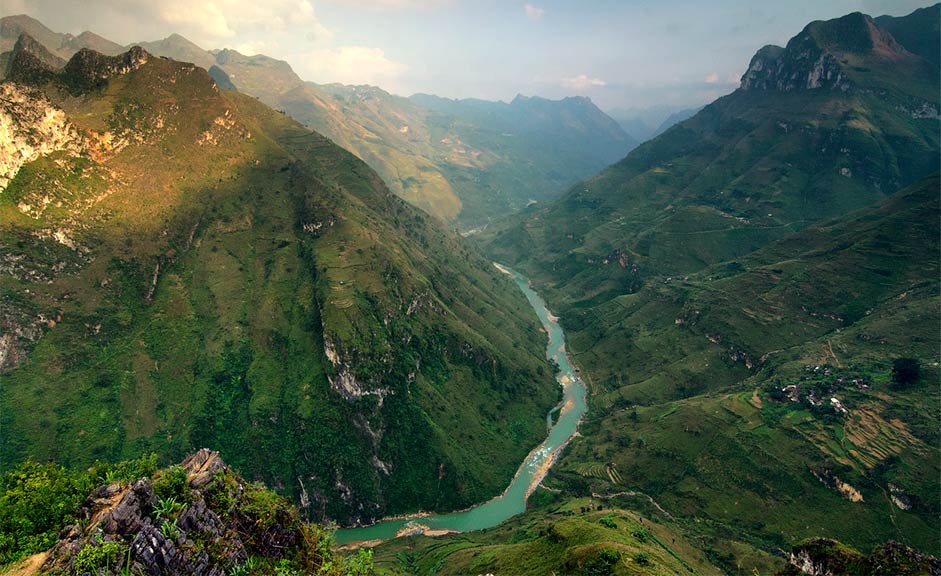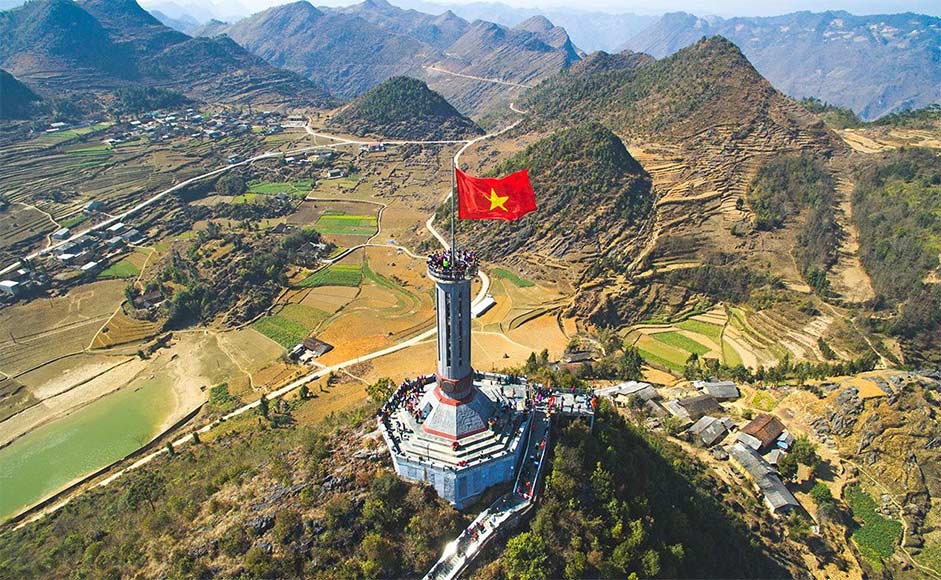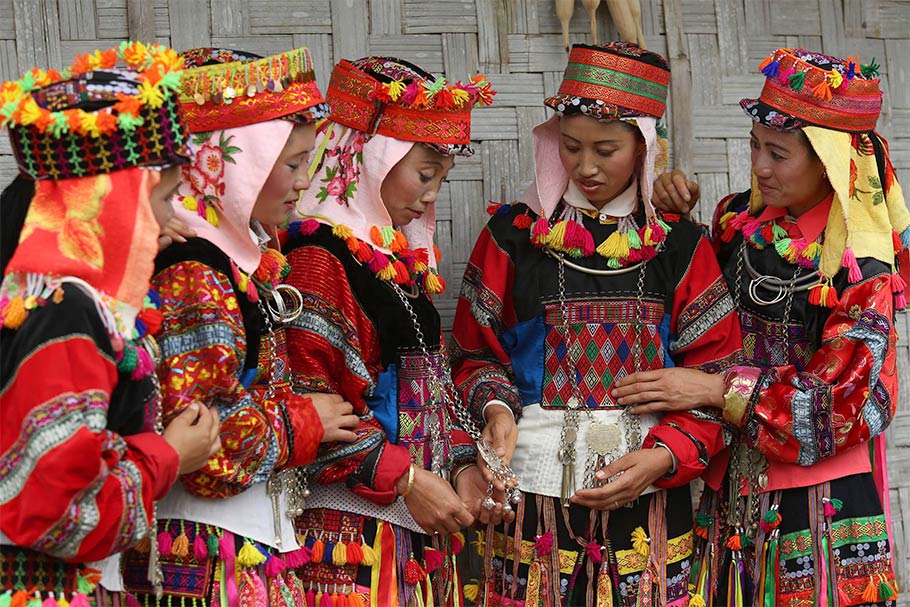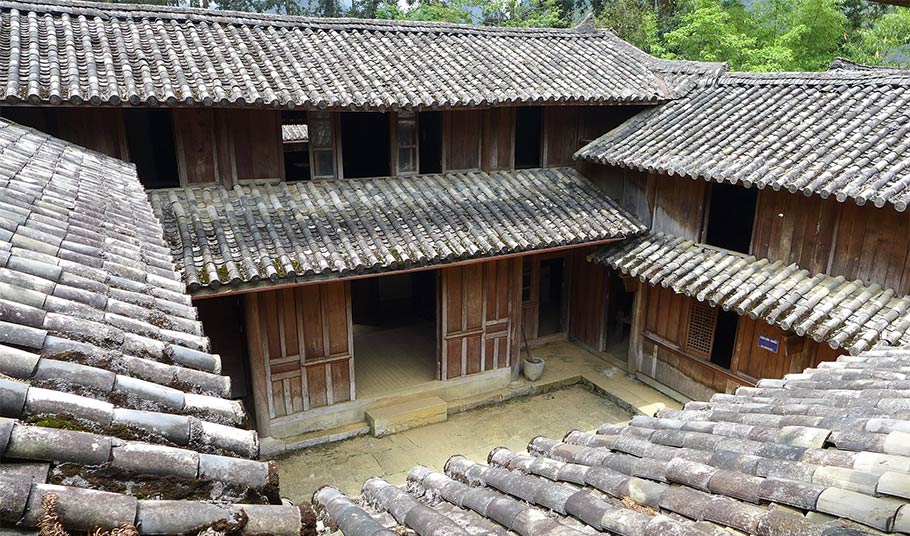As you pass through
Quan Ba Pass, also known as Heaven’s Gate, the meaning of its name will become clear to you as you are greeted by the sweeping vistas of the
Dong Van Plateau.
The plateau and the district of the same name contain many of the most famous sights and attractions of Ha Giang, such as
Ma Pi Leng Pass,
Lung Cu and the
H’mong Palace. However, it is trekking that above all else this region is famous for, and in this respect it certainly doesn’t disappoint. Adventurous travellers could spend days or weeks trekking around the wonderful landscapes filled with mountains, forests and small villages.

Your first stop after entering the plateau is likely to be Dong Van town itself, which contains a lovely old quarter mostly dating from the early 20th century, but with some houses dating as far back as 1860, such as the Vuong Family house. The market here is also a great place to visit, as locals from all the nearby tribes travel here every Saturday to trade goods and socialize with their friends from other villages.
Far to the North at the border with China lies
Lung Cu Flag Tower. The location for this massive flag was chosen as it is the northern-most point of the country, and the 12.9 meter pole is adorned with an enormous 54 square meter flag, representing the 54 ethnic groups of Vietnam. To scale the tower, one must first climb 389 stone steps to reach its base, then a further 140 steps up an iron staircase to reach the tower’s summit. There is also a museum at the base of the tower which displays various artefacts from the ethnic groups that live in the area.

Speaking of these ethnic groups, the area around Lung Cu is home to one of the smallest ethnic groups in Vietnam; the Lo Lo. This tribe is related to the Yi People across the border in China, who are far more numerous, numbering around 2 million in contrast with the Lo Lo whose total population is less than 4000, most of them here around Lung Cu. A day spent visiting the villages of the Lo Lo and learning about their unique and distinct culture is an incredibly rewarding experience, and goes well with a visit to the flag tower. If you wish to learn more about the Lo Lo, please visit our “
Ethnic Minorities” page.

For more minority villages, a visit to either Ta Lung, a small H’mong villages surrounded by mountains and goats, or Pho Bang Village, featuring traditional Hoa and H’mong architecture in the form of wooden columns and mud walls, are great choices for those looking for even more authentic cultural experiences.
Located between Quan Ba Pass and Dong Van Town is the infamous “
Palace of the H’mong King”. This peculiar building sheds light on the turbulent history of the region, and was constructed in the early 1900’s for the H’mong King who allied himself with the French by French and Chinese architects, leading to an interesting fusion of architectural styles. The Palace was abandoned in the 1950’s when North Vietnam achieved independence, and the family’s descendants now live in Canada and France.

In the far north-west of the district lies the border town of Pho Bang. Here travellers can visit to marvel at the hundreds of ancient houses, as well as enjoy the distinct Chinese culture here, as most of the town’s inhabitants are ethnically Chinese, rather than Vietnamese.
When travelling through Dong Van, one is likely to leave the best for last; that being the stunning Ma Pi Leng Pass. While technically not part of the Dong Van district (instead lying inside the neighbouring Meo Vac district), it’s location right on the border between the two districts means that travellers will see it on the way between the two. Situated at 2000 meters of altitude, the pass offers some of the most beautiful panoramic views in the whole country, and is the road you will be taking to continue on through Ha Giang to the district of
Meo Vac.